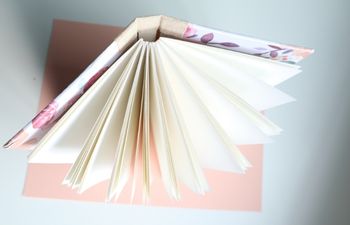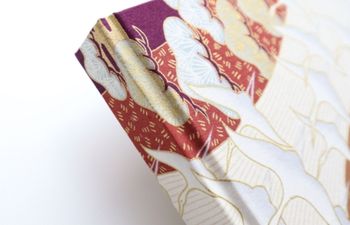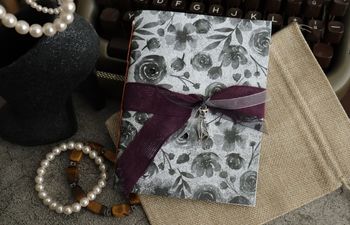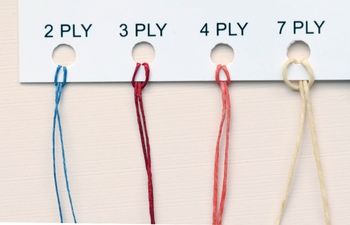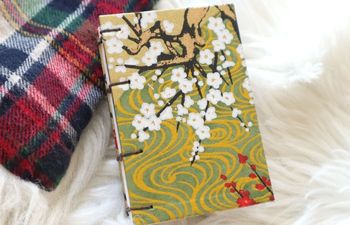A great way to get started with bookbinding is to learn the basic parts of a book. If you were to strip away the content from any book, you would find these features. It’s comforting (for me) because it’s almost like a universal language all bookbinders understand and build from.
What is a book?
Before diving into the basic parts, it’s probably a good idea to understand what a book is in the first place.
By definition, a book is:
a written or printed work consisting of pages glued or sewn together along one side and bound in covers. Also referred to as a “codex.”
To a bookbinder, a book is often more than that. While there is a standard definition of what a book is, there is the abstract definition of what a book means to each of us.
For some, a book is a work of art created to tell a story. For others, it’s a statement revealing something about who we are. For you, the definition may be different. It will reveal itself over time with every improved skill and piece you create.
With a common definition under our belt, we’re ready to jump into some terminology.
Terms to Know
As a teacher, I prefer to skip the jargon and use common words. For the sake of introduction, though, I would like to stick to the established vocabulary of bookbinders when describing these fundamental parts of a book. Please note, I will use “book” and “codex” interchangeably just to help you become familiar with both ?
| front board | The front cover of a codex, typically a cardboard base from 0.060 – 0.100 mm thickness. |
| back board | The back cover of a codex, always the same thickness as the front board. |
| foredge | The front edge of a codex. |
| book block | The total of all signatures, sections, folios or sheets making up the body of a codex. Also sometimes referred to as the “text block.” |
| head | The top of a codex when standing upright. |
| tail | The bottom of a codex when standing upright. |
| spine | The “backbone” of the book connecting the two side-covers. |
| side-cover | Front and back covers of a book. Side-covers are created when a material is placed over the front and back boards. |
Reference Diagram
I’ve purposely placed one book standing upright on top of another laying flat. I did this is to show you how the terms above are used to reflect a book’s structure regardless of orientation. For example, the “front” is always the front, whether the work is standing upright or flipped upside down.
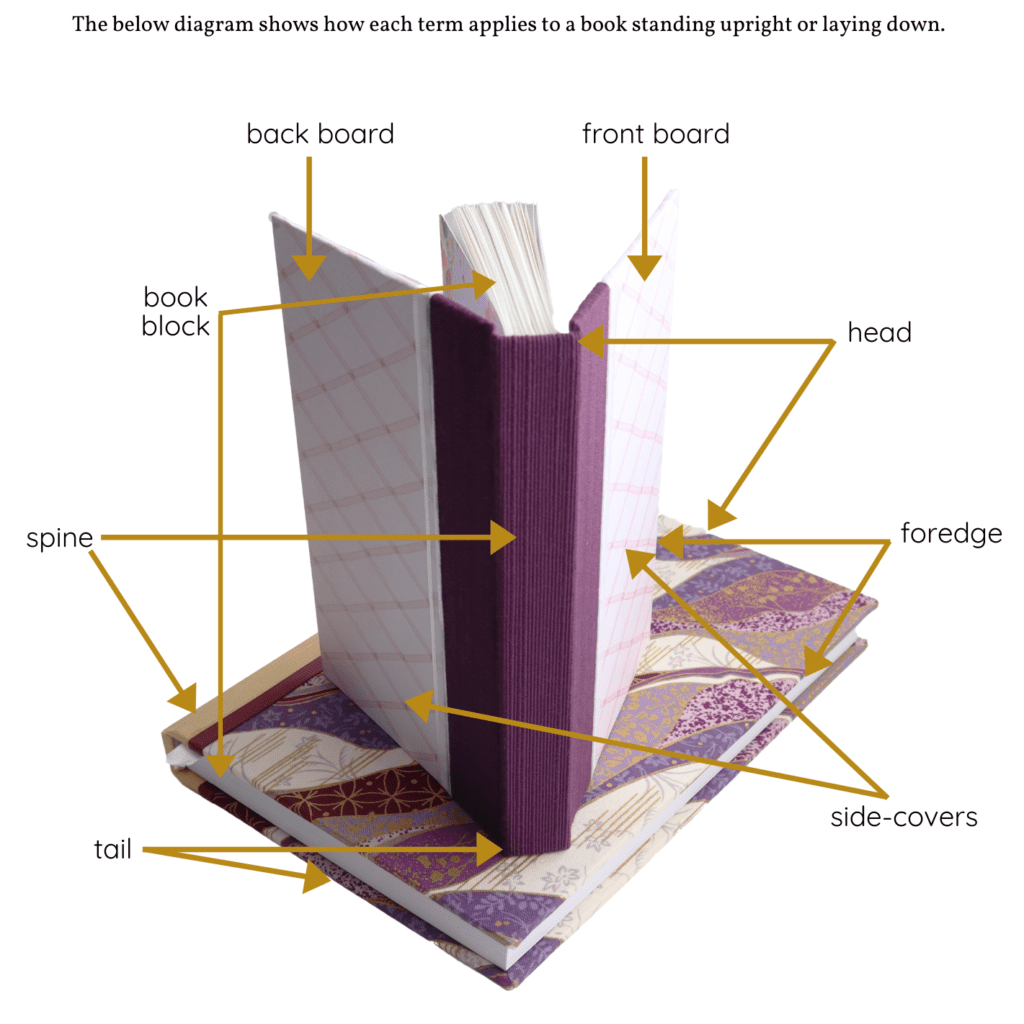
I’ve created a print-quality PDF of everything in this blog post to support your learning journey. The link will open in a new tab so you can download however you see fit.
Good luck!
More bookbinding goodness
✨ What tools do I need to get started bookbinding?
- Bookbinding Tools & Supplies Quick Start Guide – learn all about book making tools, which to buy first & where to go online
- Pick up my popular Complete Starter Bookbinding Tools Kit – all the bookbinding essentials in one spot
🌟 Looking for a simple way to start making books?
Try a Complete Book Materials Kit. Each one has everything you need (+ tutorials & videos) to make a beautiful book without all the fuss.
Thank you for taking me along on your book making journey!
Misty
